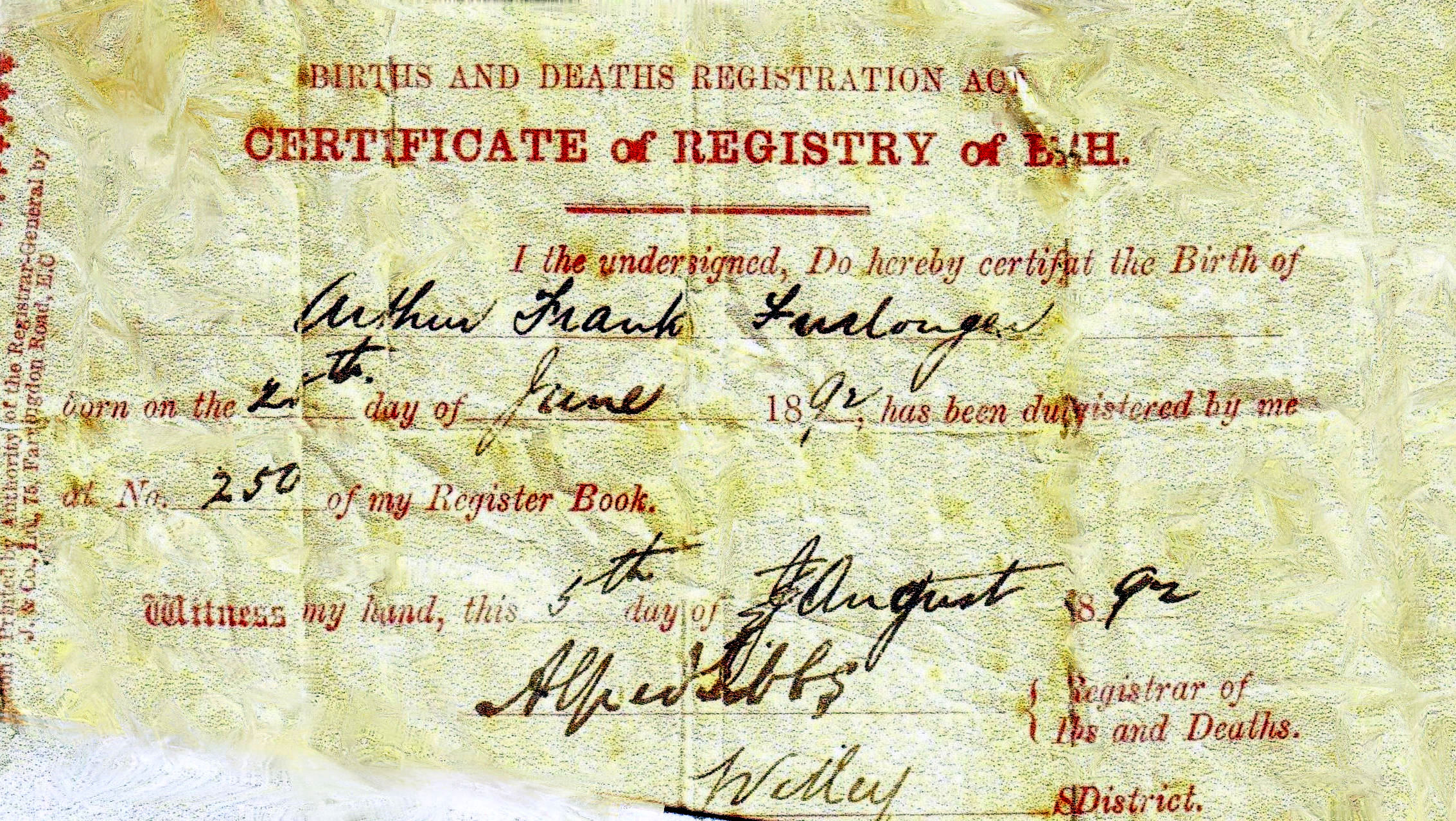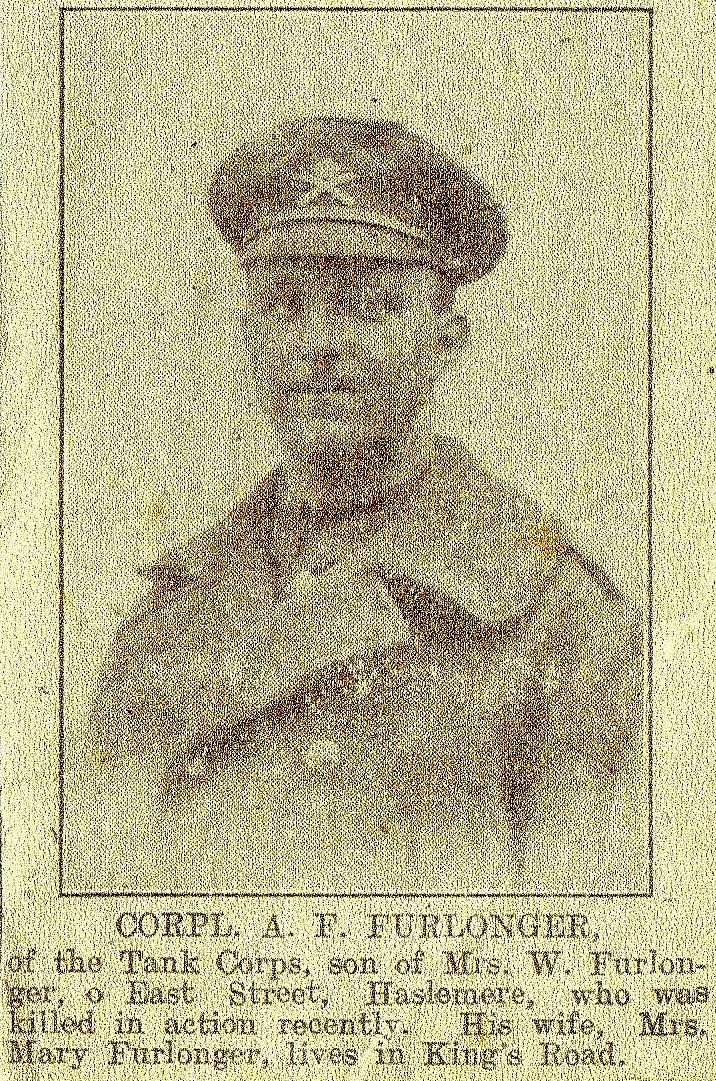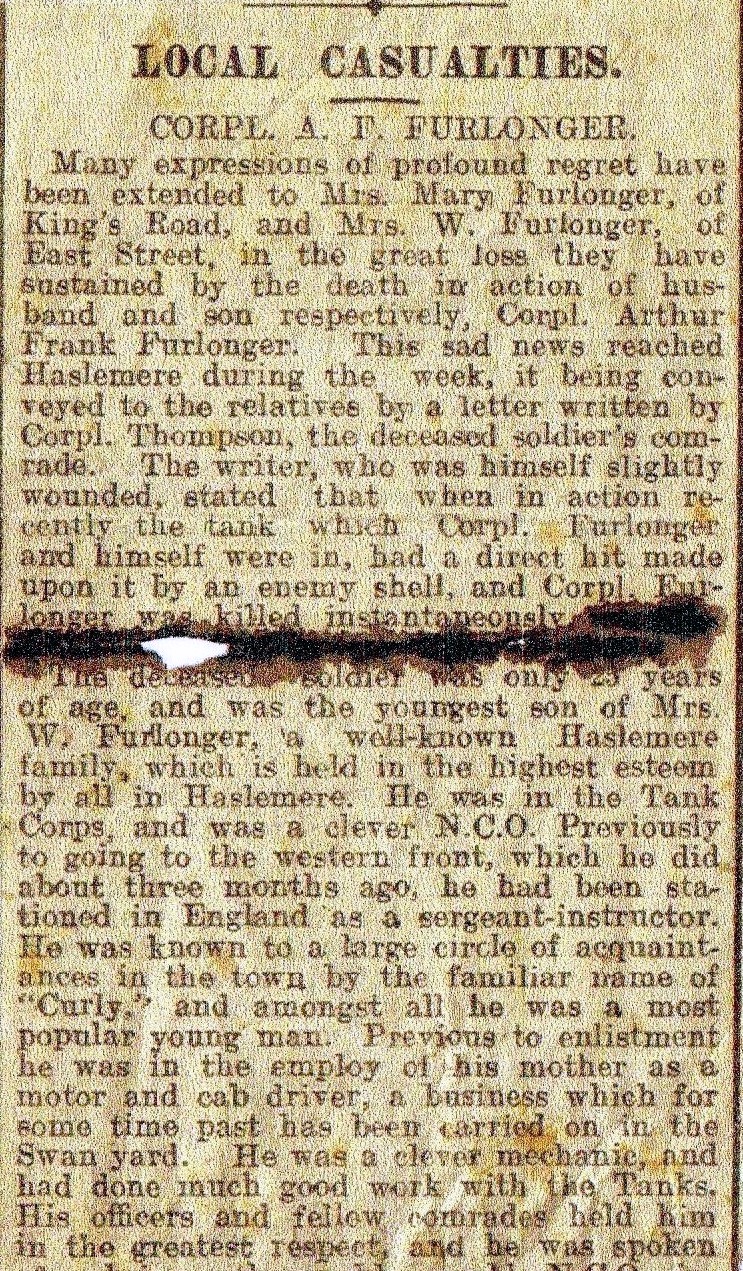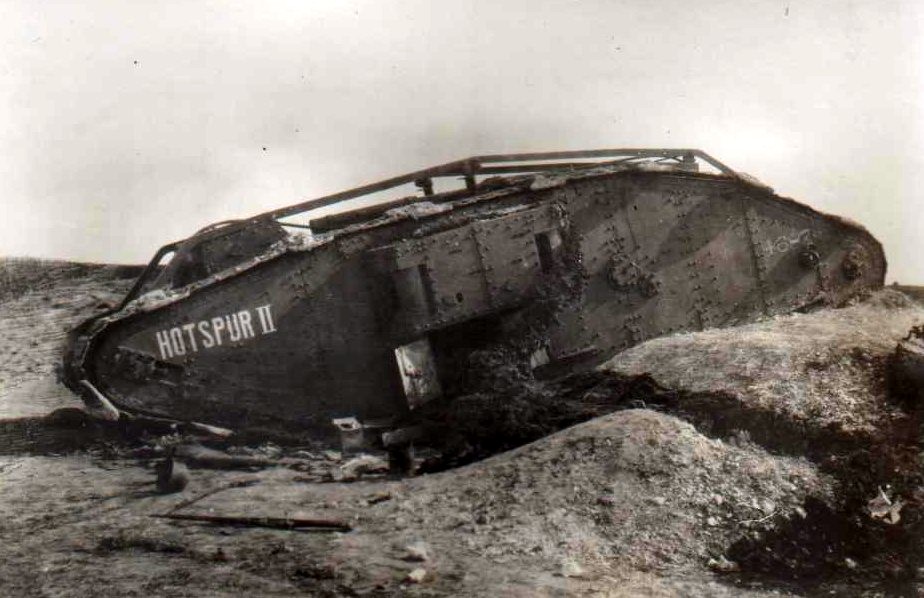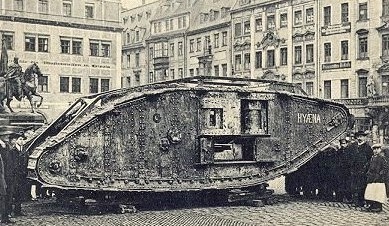
Cpl. Arthur Frank Furlonger
|
Arthur Frank Furlonger was born in Haslemere, England, the son of William and Mary Furlonger. The Furlongers were Farmers, Butchers and Businessmen.
Arthur had two brothers and three sisters, one of whom emigrated to Canada to become one of the early settlers and successful cattle ranchers of Alberta. She was Constance M. Furlonger who married George William Webb. Arthur married Mary Matilda Jeffery in January 1914 and had a son, John Arthur Furlonger in 1916. Ancestry.Com shows Arthur as serving in the Tanks Corps but only after having served with the Royal Marine Artillery under service number 2114. His place of residence is shown as Eastney, Hants. Arthur had at least three cousins, from Haslemere, who also served in the army during WWI. They were George, Sextus and Walter. All were Furlongers. The Commonwealth War Graves Commission shows the following:
FURLONGER, ARTHUR FRANK
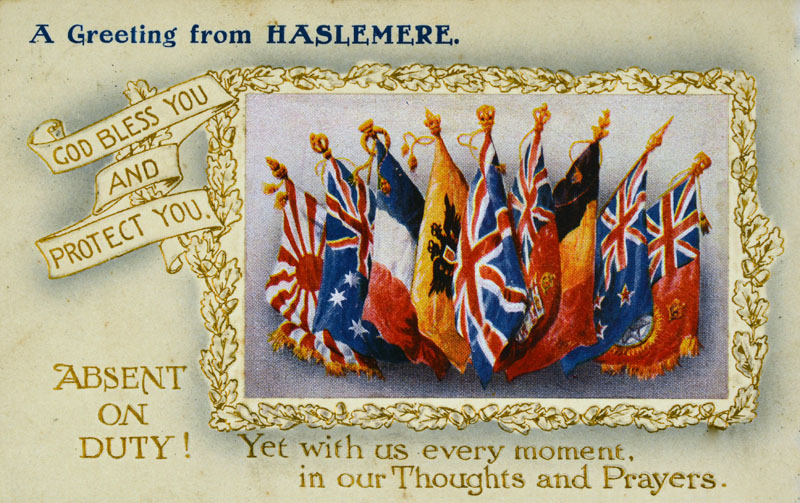
On 20 November 1917, Byngs Third Army launched a limited and tactically radical attack at Cambrai, where ground conditions were far more favourable than any seen to date. Following a surprise, hurricane artillery bombardment 378 Mark IV tanks smashed through the Hindenburg Line positions, temporarily creating a rupture to the German lines and the chance for a breakthrough. Insufficient mobile reserves could not get through in time to exploit the success, and within days the chance had gone. However, Cambrai proved to be a key learning experience for the British command.
similar to the tank in which Arthur would have fought.
"H" Battalion tanks had names beginning with the letter "H".
"Hotspur" appears to be dead on the battlefield.
"Hyaena" appears to have been captured and put on display. Sir Douglas Haig described the object of the Cambrai operations as the gaining of a 'local success by a sudden attack at a point where the enemy did not expect it' and to some extent they succeeded. The proposed method of assault was new, with no preliminary artillery bombardment. Instead, tanks would be used to break through the German wire, with the infantry following under the cover of smoke barrages. The attack began early in the morning of 20 November 1917 and initial advances were remarkable. However, by 22 November, a halt was called for rest and reorganisation, allowing the Germans to reinforce. From 23 to 28 November, the fighting was concentrated almost entirely around Bourlon Wood and by 29 November, it was clear that the Germans were ready for a major counterattack. During the fierce fighting of the next five days, much of the ground gained in the initial days of the attack was lost. For the Allies, the results of the battle were ultimately disappointing but valuable lessons were learned about new strategies and tactical approaches to fighting.
Tanks were first used at Flers in September 1916 during the Battle of the Somme in World War I. At that time the six tank companies were grouped as the Heavy Branch of the Machine Gun Corps (MGC). In November 1916 the eight companies then in existence were each expanded to form battalions still lettered A through H; another seven battalions, I through O, were formed by January 1918, when they all were converted to numbered units. On 28 July 1917 the Heavy Branch was by Royal Warrant separated from the rest of the MGC and given official status as the Tank Corps, meaning that by the beginning of 1918 the fifteen units were changed from letters to numbers as 1st Battalion to 15th Battalion, Tank Corps. More battalions continued to be formed, and by December 1918, 26 had been created. (At this time there were only 25 tank battalions, however; the 17th had converted to using armoured cars in April 1918). The first commander of the Tank Corps was Hugh Elles. The Corps saw heavy action through 1917 and 1918, with special note being given to the Battle of Cambrai (1917), which the regiment continues to commemorate annually. During the war, four members of the Corps were awarded the Victoria Cross. However, heavy losses and recurrent mechanical difficulties reduced the effectiveness of the Corps, leading the Bovington Tank School to adopt a doctrine that emphasised caution and high standards of maintenance in equal measure. It was during this battle that Arthur was "killed instantaneously" when his tank took a direct hit. The Cambrai Memorial stands on a terrace in Louverval Military Cemetery, which is situated on the north side of the N30, south of Louverval village. Louverval is 13 kilometres north-east of Bapaume and 16 kilometres south-west of Cambrai. The Memorial commemorates more than 7,000 servicemen of the United Kingdom and South Africa who died in the Battle of Cambrai in November and December 1917 and whose graves are not known.
Corporal Arthur Frank Furlonger,
|
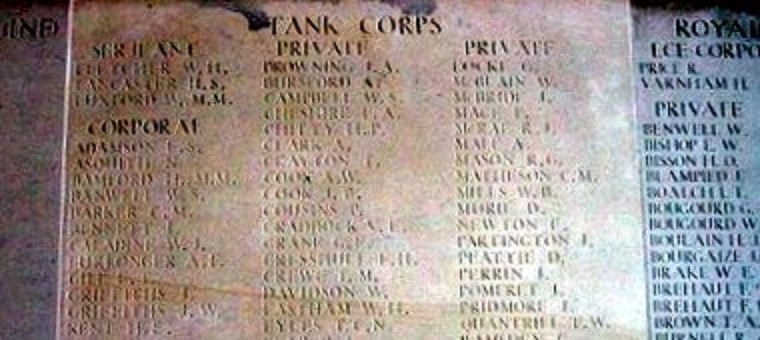
|
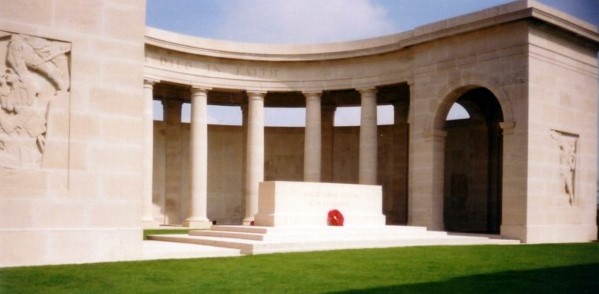
|



